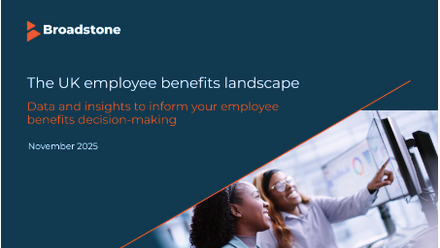GRiD's Katharine Moxham on group protection benefits and chronic health conditions
The government is on a mission to reduce the number of working-age people who are not working because of a long-term health condition. It’s no surprise, given the numbers involved and the resulting drain on UK productivity.
Looking at the public consultations Occupational Health: Working Better and Tax incentives for occupational health, which both closed on 12 October, the government seems fixed on rolling out access to occupational health (OH) to more employers to try to address this issue.
However, OH by its nature is mainly assessment and advice rather than the multidisciplinary approach, interventions and tangible practical help that comes with vocational rehabilitation.
In fact, we’ve been here before under the failed Fit for Work service, which ran from 2014 to 2018. The most common reason given by employers for not implementing recommendations made by the service was that they were reported to be impractical or inappropriate to their work context.
What employers can do
Employers need practical help, especially for employees with ongoing and chronic health conditions, treatment for which is usually not covered under private medical insurance. The solution could be group income protection, which, among other things, includes vocational rehabilitation with interventions and ‘work’ as a health outcome.
Group income protection is primarily an insurance contract employers use to cover their commitment to provide long-term sick pay, but these days it’s much more than that – more a return-to-work solution fundamental to a workplace wellbeing strategy.
A group income protection policy will come with embedded services all aimed at mitigating absence, supporting people back to work and encouraging better health behaviour.
These can include case management, vocational rehabilitation, access to fast-track talking therapies and physiotherapy, online GP and second medical opinion services, health apps, HR and line manager support and more, all giving practical support to employees, employers, smaller business owners, HR and line managers alike.
This is all incredibly helpful for not only those employees who experience traumatic or shorter-term illness/events, but particularly for those who have ongoing and chronic conditions who might, for example, need help in managing pain or stamina, reasonable adjustments, flexibility, mediation or other more specialised interventions to enable them to continue working.
Everyone benefits
Our growing understanding of chronic conditions and our ageing workforce (for whom chronic conditions and co-morbidities are increasingly prevalent) means supporting employees to manage long-term health conditions benefits businesses, productivity, individuals, the NHS and the state.
GRiD’s latest research highlights that, for their older employees, employers are most concerned about the issue of them living with long-term chronic illness or health conditions, such as diabetes. Their older employees agree this is their number one health concern too.
Department of Work and Pensions/Department of Health and Social Care research into sickness absence in the workplace in 2021 found that:
“Three in five employers (61%) reported facing barriers in supporting employees to return to work following a LTSA [long-term sickness absence]. Small employers reported a lack of time or staff resources (64%) and a lack of capital to invest in support (51%).
“In contrast, a greater number of large employers encountered structural challenges such as a lack of flexibility in how work was organised (67%) and difficulty engaging employees in the process (61%)” and “some employers lacked confidence in managing returns to work, particularly in more complex cases. These employers reported not knowing how to instigate or conduct a return-to-work conversation.”
A wider solution is needed
The government’s aim of getting the long-term sick back into the workplace is sound but perhaps its proposed solution is less so.
Most employers are mainly concerned with running their business and don’t have the time or resources to act on OH advice without someone stepping in to work with them on it.
So, whatever the outcome of these consultations, employers looking to provide help for their workforce in its entirety as well as for those with chronic conditions, would do well to include group income protection and vocational rehabilitation in their kitbag.







